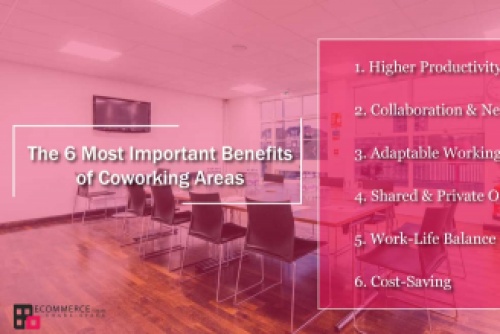Should You Rent: Coworking Space or a Traditional Office?
Your small business needs a place to operate. How to choose between a coworking space and a conventional office is provided here.
You have the option of picking a coworking space or a standard office when deciding where your firm will be physically located.
Each has advantages and disadvantages, but the best option relies on your company's nature, production objectives, and preferences.
As of 2022, there were about 6,200 coworking spaces in the United States, out of a total of about 19,400 available worldwide. Around 1.933 million people used coworking spaces worldwide in 2020, with 865,000 of them residing and working in the United States.
The following information will help you choose between a coworking space and a typical office space for your company.
Top Coworking Growth Statistics
In 2020, it is anticipated that there will be about 20,000 coworking spaces worldwide (Allwork.Space)
By 2024, it's anticipated that there will be over 40,000 coworking spaces worldwide (Allwork.Space).
Shared workspaces will be used by 13% of organizations outside of the US by 2022. (Allwork.Space)
The 6 Most Important Benefits of Coworking Areas
1. Higher Productivity
The productivity of those who work from home is significantly increased. Going to a coworking space helps you finish your work on schedule and with as little interference as possible.
2. Collaboration & NetworkingThe network and collaboration options that a coworking space provides are the key distinction between a typical office and a shared office.
Those people might come up with the next great business concept for your organization.
3. Adaptable Working HoursPeople have the freedom to enter and leave coworking spaces whenever they wish.
They can set their office hours that work best for both their schedule and the needs of their company.
4. Shared & Private Office
The fact that coworking spaces include private and communal offices that are open to all employees is fantastic.
5. Work-Life BalanceYour mental health depends on finding a work-life balance, thus there should be a designated area between your home and office.
6. Cost-SavingCoworking spaces offer special benefits like cleaning staff and printing services without charging extra, and you only pay for the spaces you really utilize.
Which is Better: Coworking Office Or Traditional Office?
Pros of coworking spaces:
diverse workspace
Individuals are free to move around in coworking spaces.
networking and collaboration possibilities.
There are numerous opportunities to connect with people you might not have otherwise.
Cons of coworking spaces:
populated areas.
There are a lot of people here, which could be annoying.
There are alternatives that cost less.
While traditional offices are typically more expensive than coworking spaces.
Traditional office spaceTraditional office spaces are a private headquarters for your business because they are designed for efficiency and attention.
Although the design may be open like a coworking space, you also have the choice to partition it into individual offices or cubicles.
You have full access to your technology and other resources, and there are specific conference rooms for group gatherings.
Which is Best for You?Coworking spaces could be more advantageous if your company is relatively small or if you operate alone.
These areas are an excellent method to reduce costs and boost output.
Coworking spaces are the perfect option if you want to encourage a creative, collaborative team.
There are several opportunities for networking, cross-industry collaboration, and team communication.
Conclusion
You may work whenever and wherever you choose thanks to the modernization of the traditional office setting brought about by office spaces.
The EcommerceBD is a coworking space with hundreds of the most inventive, rapidly expanding startups, company owners, and small enterprises from across the world, all surrounded by the resources they require to succeed.












 Buy Suhagra (Sildenafil) Tablets Online [20%Off] @ Powpills
Buy Suhagra (Sildenafil) Tablets Online [20%Off] @ Powpills



